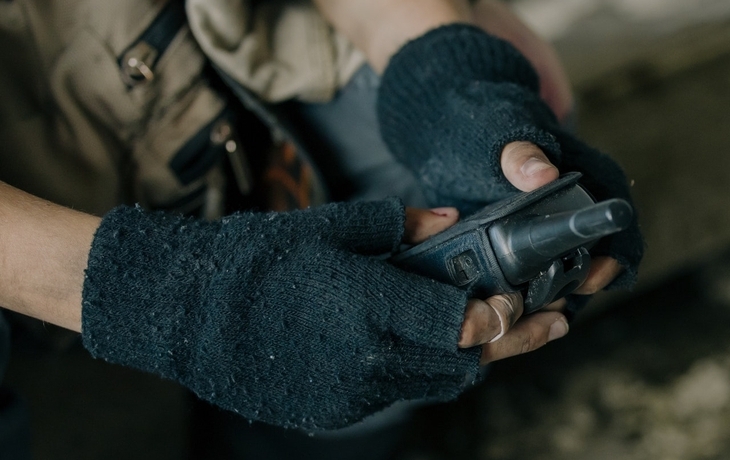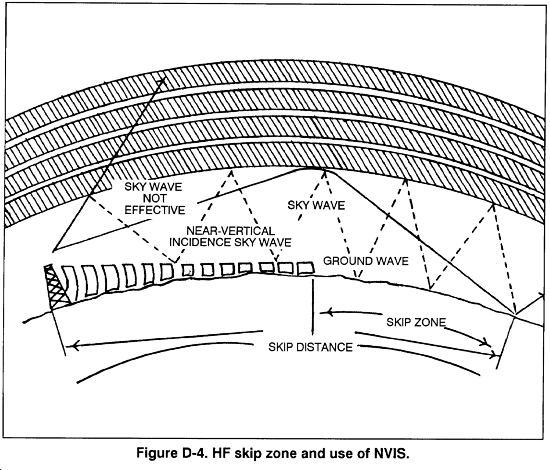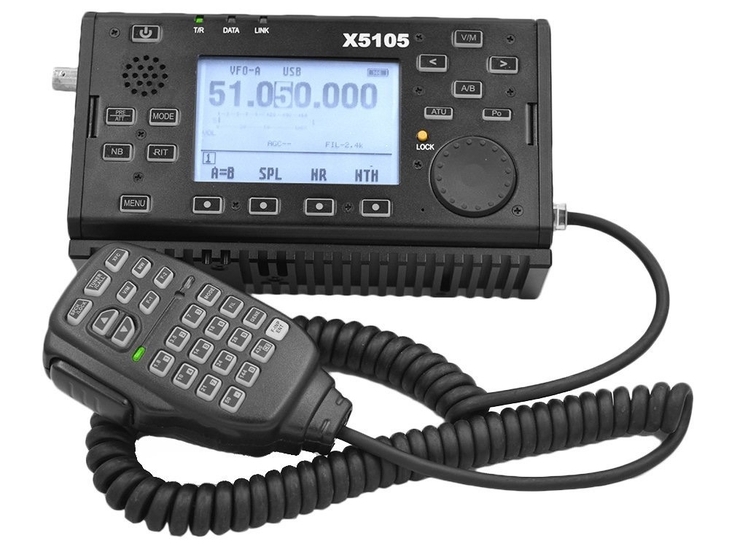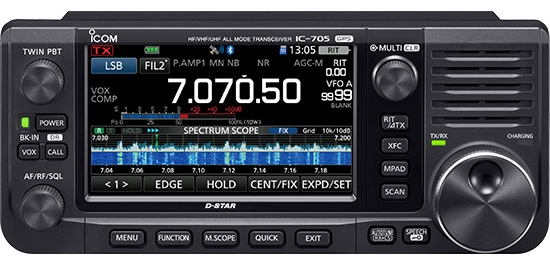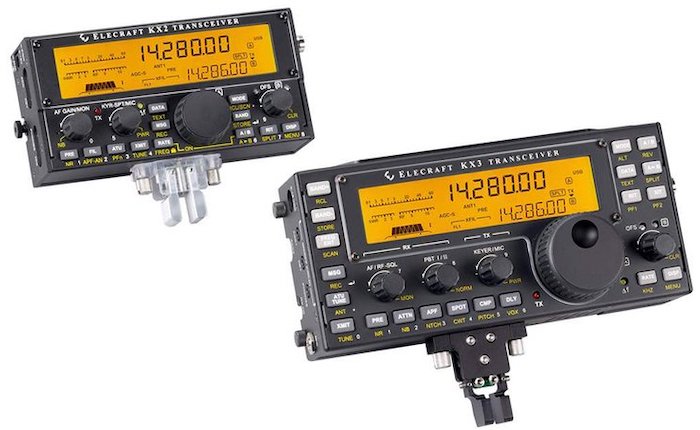Editor’s note: The 2020-21 crises have made ham radios sometimes hard to find. We’ve included multiple options below in case your preferred choice isn’t available.
Ham radios are generally split up into “handie-talkies” (HTs) that are easy to carry by hand and foot in the field, “mobile” radios that are meant for vehicles, and larger “base stations” meant to sit on a desktop.
Even though all of the types are relatively small and could theoretically be picked up and taken with you, HTs are the right choice for most people’s primary bug out bag / emergency kit checklist because you want to be able to travel with the least amount of gear. You sacrifice power, range, and advanced capabilities, but the tradeoff is worth it for this role.
Check out the beginner’s guide if you’re new to ham radio or curious why it’s the best choice for prepping. Other ham guides:
- How to program a Ham radio with CHIRP software
- Tracking the grocery supply chain off-grid with ham radio and JS8Call
- Must-have BaoFeng radio accessories for tactical comms, go-bags, and cars
- How to manually program a BaoFeng radio
- BaoFengs are fine radios, but they don’t have hundreds of miles of range
HTs work on the VHF and UHF bands, which can make contacts at short and medium distances — about 1 to 40 miles, depending on your elevation and surrounding terrain.
If you can hit a nearby repeater, which is an amateur radio station that picks up a transmission and “repeats” it over a much greater distance, you can talk with contacts dozens and sometimes hundreds of miles away. If a repeater connects to the internet over something like EchoLink, you can talk to people all over the world. HTs can even reach satellites like the International Space Station, but that’s usually not useful for emergencies.
The High Frequency bands (HF) can reach further than standard VHF/UHF. There technically aren’t any handie-talkie HF models, but there are some HF models small enough that some people take them out in the field — often just for funsies, less so practical uses. These larger units are called QRP radios, which is ham-speak for “low power.” The vast majority of people can ignore this, but since HF has interesting uses in serious collapse situations for advanced preppers, some options are included below.
Summary:
- Quick reminder that you don’t need a license to listen, but you do need one to transmit. It’s fine if you transmit without a license in a bonafide emergency. But radio takes practice, so you should get licensed (it’s easy!) and learn how to use this gear before an emergency.
- Handie-talkies (HT) are the best type for most people’s portable kits. All the components combined might be the size of two decks of cards and weigh less than a pound.
- HTs might not make sense for you if you live in an isolated area with no other hams / repeaters nearby, since the HT range is limited. If in doubt, buy a cheap one and test what’s in your area before investing or deciding further.
- You get what you pay for. BaoFeng and similar Chinese brands have been a positive for lowering the bar for newbies to get into ham, and they’re fine for casual people who want something “just in case,” but they don’t compare to better-established brands.
- Yaesu and Icom are two of the most respected brands.
- Most people spend between $50 and $200 when you include the radio, battery, antenna, etc.
- There are a number of digital modes, many exclusive to specific radio brands. But you shouldn’t worry about digital until you’re pretty experienced. Stick with plain ol’ analog when starting out.
- The ham community is passionate, often going way deeper than you’d want. But if you want to dive in, check out places like eHam.net.
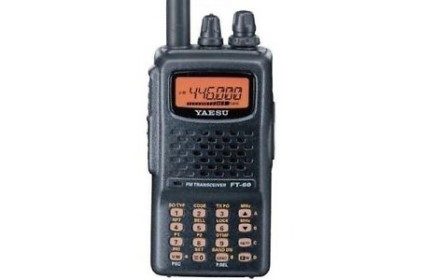
Best for most:
Yaesu FT-60R
For years, the Yaesu FT-60R has been a top pick among experienced ham operators, making it the best pick for most. First introduced in 2004, the FT-60R is a bit long in the tooth, but its staying power is a testament to its quality construction and great performance. However, at around $150, it’s a larger investment than the BaoFeng.
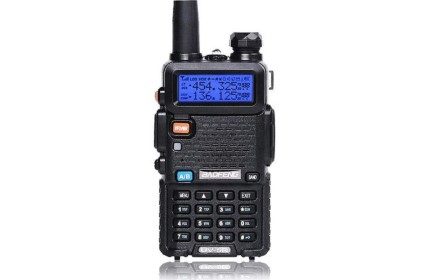
Inexpensive:
BaoFeng UV-5R
The best budget HT is the BaoFeng UV-5R (Amazon). It’s usually inexpensive, between $25 and $35, has numerous accessories on the market, and great community support due to its popularity. They’re not fantastic radios, but they’re a great springboard into the world of ham. Especially as first radios for kids. A popular sibling is the (supposedly) higher-powered 8-watt BaoFeng BF-F8HP (Amazon).
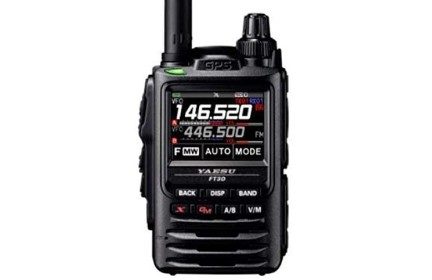
Digital powerhouse:
Yaesu FT3DR
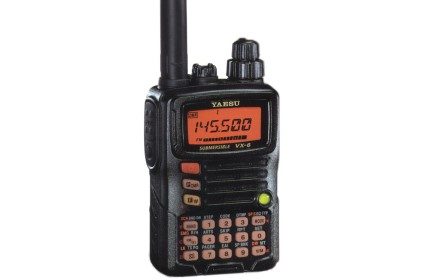
Simple but rugged:
Yaesu VX-6R
There are two paths for upgrade picks: the Yaesu FT3DR (Amazon), which features a touchscreen and built-in digital messaging, and the ultra-rugged tri-band Yaesu VX-6R. They’re both excellent radios but serve different needs.
Low-power portable “QRP” HF radios aren’t for beginners. In the United States, you need an advanced General license to transmit with these, and HF has a higher learning curve than VHF and UHF. You’re better off starting out with a 100-watt radio, but these low-power HF radios can be useful in the field.
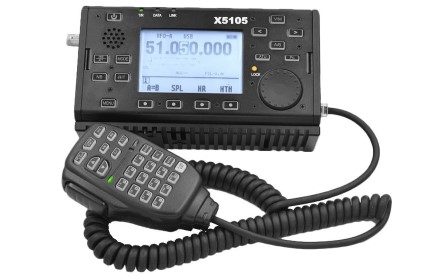
Affordable portable HF:
Xiegu 5105
The Xiegu X1505 (Amazon) is a well-regarded budget model that competes with much more expensive radios. Xiegu radios have some of the best-regarded built-in antenna tuners on the market — ham operators have used Xiegu tuners to transmit from fire extinguishers and wire fences. It’s been favorably compared to the Elecraft KX2, but it’s much cheaper.
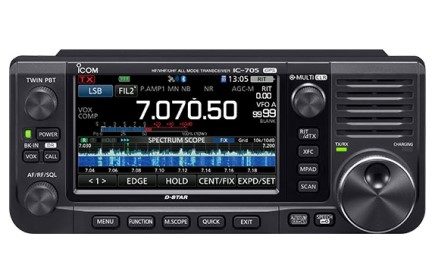
New hotness:
Icom IC-705
The new and popular Icom IC-705 (Amazon) costs significantly more, but adds modern amenities not often found in ham radios, such as a touchscreen, Bluetooth, GPS, and Wi-Fi, plus it can also operate on 2 meters in addition to HF. Out of the HF radios listed here, it’s by far the most user-friendly. Unfortunately, it doesn’t include a built-in antenna tuner.
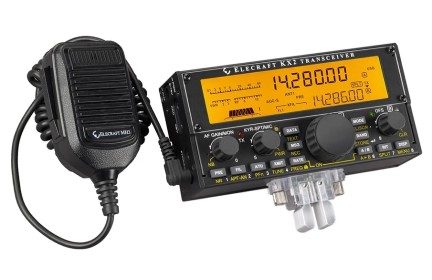
American-made QRP:
Elecraft KX2
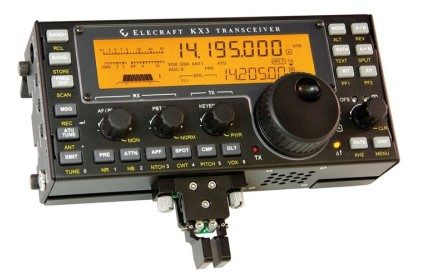
Less portable, more capable:
Elecraft KX3
Finally, the Elecraft KX 2 and Elecraft KX3 might be the ultimate prepping radios. They’re not cheap, but they’re rugged and modular, suited for almost any radio task (as long as you have the cash for the accessories). They’re also the only standalone HF radios still made in the United States.
Contenders
Although not currently top picks, these models are worth a look if you want more shopping options:
Be prepared. Don’t be a victim.
Want more great content and giveaways? Sign up for The Prepared’s free newsletter and get the best prepping content straight to your inbox. 1-2 emails a month, 0% spam.
What about BaoFeng?
The elephant in the room: Chinese manufacturer BaoFeng has made a splash in the ham radio market with inexpensive handie-talkies like the UV-5R and the BF-FH8. When newbies ask for recommendations on social media, for example, other people often reply back with BaoFeng because it’s cheap and common among entry-level preppers.
On the flip side, many experienced hams groan because the radios themselves are clearly in the “you get what you pay for” category, and the lower barrier to entry has brought in a lot of newbies who sometimes don’t follow proper rules and etiquette. Because the airwaves are public, being a good “radio citizen” is important to not cause problems for others, such as “kerchunking” repeaters.
In fact, it’s often advisable to not mention that you’re on a BaoFeng when talking with a strange ham.
The punchline is that, although controversial, BaoFengs are good enough for people who just want to have something on hand while they learn the basics and get their license. Then, once they know the ropes, they pay for better long-term equipment and keep the BaoFengs on hand for extras or to give to family members.
Some pros of the BaoFeng HTs:
- Cheap, often under $50 to get started
- Popular, so there are lots of accessories and online tutorials
- Can be easily programmed with the free CHIRP software
- Feature a built-in flashlight and FM receiver
- Can transmit on frequencies that ham radios usually can’t transmit on
And cons:
- Not at all rugged
- They don’t broadcast clean signals and are often noisy
- Reception is weaker than better models
- Slow to scan across frequencies
- Difficult to program manually
- Tend to have much less transmit power than advertised
- Can transmit on frequencies that ham radios usually can’t transmit on
Following the rules vs. having flexibility in an emergency
Why is the last point about BaoFengs both a pro and a con?
Civilians are allowed to use some blocks of the radio spectrum and stay out of others (eg. for aircraft). Within the civilian world, some competitors to ham are GMRS, and FRS (see more in the beginner’s guide).
By law, you’re supposed to stay within the blocks of frequencies for your particular radio type. Ham in ham ranges, FRS in their ranges, and so on. Obviously, groups like paramedics and fire departments don’t want random idiots clogging up their airwaves.
It comes as no surprise that Chinese manufacturers don’t always care about Western laws. While the BaoFengs are approved by the US FCC, they exist in something of a gray area because of their lack of transmission limits. The FCC has flirted with banning them over the years, something many hams support because of how they skirt the rules.
But there’s an obvious benefit to prepping to have one radio that can contact lots of different bands such as GMRS or FRS.
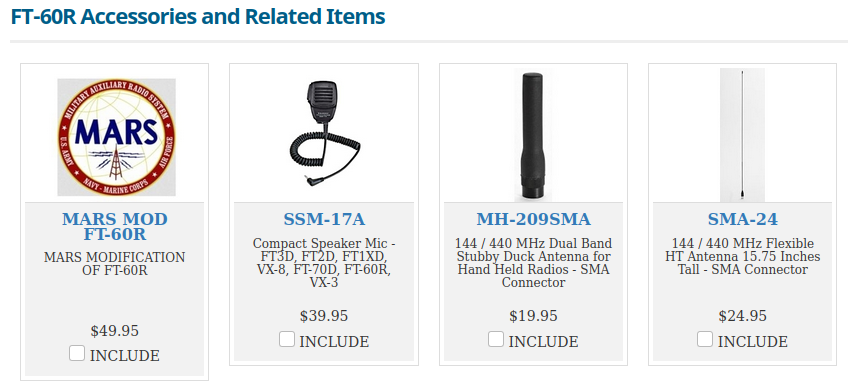
Most “respectable” brands build their radios so their ham radios won’t transmit outside of the amateur bands, — but they are easily modified to do so. This is often called a MARS or CAP mod. MARS stands for Military Affiliate Radio System and CAP stands for Civil Air Patrol. The mod is usually performed by removing a single component, such as a resistor or diode, and many ham radio retailers will do the mod on a new radio for an additional charge.
Portable radio features
You often have to make tradeoff decisions, rarely finding a single model that does everything you’d want. Some people would love a tri-band HT with a BNC antenna connector, lithium-ion battery, high IP rating, and so on, but it just doesn’t exist. And if it did it would probably cost $1,000.
Bands: You want a radio that covers both the 2m VHF and 70cm UHF bands. Most radios do both. But there are some that only cover one, like the Icom IC-V86 and the Icom IC-U86, though single-band radios tend to perform better on the band they focus on. There are also some tri-band radios that cover the less-commonly used 1.25m VHF band, like the Yaesu VX-6R.
Transmit power: The standard for HTs is 5 watts and that’s the minimum you want. BaoFeng also advertises 5 watts or more for their HTs, but in reality, those radios don’t get anywhere close to that.
Battery: Most newer HTs include a lithium-ion battery (Li-ion), but some older models like the Yaesu FT-60R still use nickel-metal hydride (NiMH). Here’s a beginner’s guide to battery types. Also consider the price of spare batteries, whether extended batteries are available, and whether you can use standard AA batteries in an adapter.
Backlight: You want a keypad and display that light up when you press buttons. That’s pretty standard these days.
Antenna: The rubber duck antennas that are included with HTs are a compromise in the first place, but some are better than others. The antenna included with the UV-5R is lousy, but can easily be replaced. Also, consider the antenna connector. SMA is fairly standard but is fragile and hard to install and remove. BNC, which easily twists on and off, is ideal. You can buy an inexpensive adapter to use BNC antennas even on a radio with another type of connector.
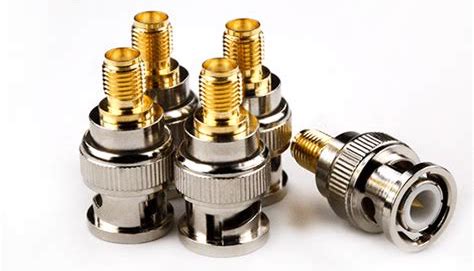
Ruggedness: Especially for more expensive radios, you want some level of dust and water resistance. Look for IP ratings such as IP68, which means total dust protection and long-term submersion protection.
Ease of programming: This is somewhat subjective, but Japanese radios like Yaesu and Icom tend to be much easier to program manually than BaoFengs. This is important, since you may have to punch in a frequency or program a repeater into memory in the field. Read radio reviews or download a copy of the manual to see if the programming procedure clicks with you. Also look for HTs that are compatible with the open-source CHIRP software.
Memories and channels: You obviously want to avoid needing to remember that your local repeater is 145.39 MHz. So you want a radio with a built-in address book. The Yaesu FT-60R can store 1,000 channels, for example, but BaoFeng radios only have 128 channels.
Digital modes: Some higher-end radios like the Yaesu FT3DR support things like text messages through APRS. There are also various proprietary digital voice modes to be aware of, discussed below.
GPS: Some high-end HTs have a built-in GPS receiver, which can be exceptionally useful if you need to call for a wilderness rescue.
Weather channels: Any HT can pick up NOAA weather stations, but many better radios have them pre-programmed so they don’t take up channels in your memory. Some HTs even have weather alerts.
Accessories: Outside of antennas and batteries, what sort of accessories can you attach to the radio? What is available on the market? Consider things you might want in the future like handheld microphones and headsets.
Accessories to consider
Here’s a post specifically about great BaoFeng accessories. Otherwise, broadly speaking:
- Data cable: Most HTs do not include a data cable in the box, which lets you connect the radio to a computer so you can program it with CHIRP or other software. These are strongly recommended for making programming easier.
- SMA to BNC adapter: Most HTs use SMA antenna connectors, which are fragile and tedious to unscrew. BNC connectors let you twist antennas on and off, no screwing required. Pick up an adapter like the Diamond Antenna BNCJ-SMAP and keep it on your radio. You can even use a little blue Loctite to hold it in place (Blue Loctite secures the connection while still making it removable. Don’t use red Loctite, which is permanent!).
- Better antenna: If you buy an Icom or Yaesu, the included antenna should be pretty good, but you can always upgrade to something like a Signal Stick, which is flexible and can be purchased with a BNC connector.
- Slim jim antenna: You can buy roll-up “slim jim” antennas that can be hung in a tree for better performance than you can get with a “rubber duck” antenna. Nelson Antennas and N9TAX are popular models.
- Extra batteries: It’s a good practice to carry at least one extra battery. Some radios have higher-capacity batteries that you can buy, though they tend to be much larger.
- AA battery adapter: Many HTs have an optional battery pack that can accept standard AA batteries, which gives you more power options.
- Solar charger: Every radio will have a different way to accomplish this. BaoFeng has a USB charger that can connect to USB solar chargers. Some radios don’t have a direct method, but you can pair rechargeable AA batteries with a AA battery adapter, and a USB battery charger.
- Headsets and microphones: Most HTs can be equipped with various headsets and shoulder mics if you want more hands-free options.
Digital modes
You may not be aware that there are many digital modes available. While most traffic on 2m and 70cm is voice (or “phone” in ham lingo), there are digital modes for text messages, clearer voice communications, and other capabilities. Before investing in a radio, consider whether you want to use any of these modes.
The oldest standard is Automatic Packet Reporting System (APRS), also known as packet radio. APRS is an open standard that transmits text messages and other bits of data over the airwaves. Any HT can do APRS with the right adapter and a smartphone app like APRSdroid for Android or APRS.fi for iOS. Some higher-end radios like the Yaesu FT3DR have built-in APRS capabilities.
Tip: You can use the APRS.fi website to see APRS stations near you. The standard US frequency for APRS is 144.8. Try tuning in and see if you can hear digital signals!
There are also a variety of different digital modes championed by different vendors. Icom pushes the open D-STAR mode, while Yaesu supports their proprietary System Fusion and WIRES-X modes. DMR is an increasingly popular mode, but you won’t find it in Icom or Yaesu radios, but rather models produced by Alinco, Anytone, TYT, and a few others. (However, Yaesu does make a repeater that lets System Fusion and DMR work together.)
Unfortunately, you’re not going to find a radio that supports them all. I recommend looking up your nearby repeaters in RepeaterBook to see if the repeaters you’re likely to rely on support any of these modes. Hams typically will buy radios specifically for a digital mode and not use them for much else.
These are just the digital modes for VHF and UHF. The HF world has an entirely different world of digital protocols.
Portable HF radios
An HF transceiver won’t make much sense in most go-bags. For one, to get much out of HF you need a General license in the United States, which is much more difficult to obtain than the basic Technician license.
The second reason is that HF is much more complex than VHF/UHF, which means bigger radios and more challenging antenna setups. Lastly, HF is primarily useful for long-distance communications and not short-range communications due to skip zones.
That said, experienced operators like OH8STN like taking their HF radios into the field, and a portable HF radio isn’t a bad thing to have. Technically, any radio is portable if you’re strong enough and hook a battery up to it. But the following models are battery-powered HF transceivers that can be easily shoved into a go-bag.
It’s important to note that these are QRP radios (QRP is ham-speak for “low power”). Expect 5-10 watts of output at most, compared to most HF base stations that put out 100 watts. Lower power output means that phone comms might be frustrating since a high-powered operator can easily (and accidentally) talk right over you. Many QRP operators take advantage of CW (Morse code) or a dizzying array of digital modes like PSK, FT8, JS8Call, WSPR, and literally hundreds more.
More: Tracking the grocery supply chain off-grid with ham radio and JS8Call
Another thing to understand about HF radios is that one isn’t necessarily “better” than another. There just aren’t that many produced and they all have their own pros and cons. If you’re new to HF in general, the below models are too advanced and you should start with something like a Icom IC-7300 or even a 20-watt Xiegu G90.
Xiegu 5105
Xiegu is a new Chinese radio manufacturer, and the Xiegu 5105 is a well-reviewed budget QRP radio, starting at $500. It’s been favorably compared to the much more expensive Elecraft KX2. It features a number of niceties, like a built-in antenna tuner, a BNC antenna connector, and upgradeable firmware. It’s a great place to start with QRP radios.
Icom IC-705
The Icom IC-705 is the latest and hottest thing in ham radio. It features modern amenities that are common to smartphones but not to ham radios, like a touch screen, Bluetooth, GPS, and a single USB port for data connectivity. It can output 10 watts with the included external power supply or 5 watts on the battery. Its 4.3-inch screen displays a real-time spectrum scope and waterfall, which help you visually see which frequencies are in use. It can also transmit on the 2m band and listen in to FM and Airband transmissions.
This is by far the most user-friendly HF radio mentioned here, but starting at $1,300, it’s not wallet-friendly. It also lacks a built-in antenna tuner.
Elecraft KX2 and KX3
You could make a case that the Elecraft KX2 and KX3 are the ultimate prepper radios. They’re made in America, are completely modular (you can even buy them as kits and assemble them yourself), and rugged. The KX2 is more portable, while the KX3 has more options, like a 2m add-on board. Both have an optional internal antenna tuner, which I would highly recommend.
But they’re not cheap. The KX2 starts at $830, not including any necessary accessories. You can buy a “shack in a box” setup for $1,350. The KX3 starts at over $1,100, with package deals starting at over $1,500.
Portable HF Antennas
The real trick with portable HF ops is finding a suitable antenna for transmission. You want an antenna that will be resonant on your preferred frequency, which means that the antenna is at an ideal length to receive and transmit well on that frequency.
That’s especially important with QRP operation because you don’t have the power to spare getting your signal out of a suboptimal antenna. But you also don’t want to try to cram an enormous HF wire antenna into your go-bag.
If an antenna is not resonant, you may need an antenna tuner. It’s a common misconception that tuners make antennas somehow work better. In reality, they act to balance out impedance mismatches, reduce SWR, and thus prevent damage to your radio. The Xiegu 5105 features an excellent built-in tuner and the Elecraft radios have add-on tuner boards for around $200. Radios like the Icom IC-705 that have no internal tuner option can be paired with an external tuner like the Icom AH-705. You want to avoid an extra tuner if you can help it because they are expensive and mean more bulk in your bag.
Entire libraries of books have been written about antenna theory and design, but here are a few accessible approaches to field antennas:
The most portable option is a whip antenna. Elecraft makes a telescoping whip, the AX1, which is compact and adjustable but has middling reviews. Operator OM0ET attached a CB radio antenna to his Xiegu X5105, which let him use it like an HT, and he successfully made contacts.
Another option in the field is a lightweight wire antenna. You could carry multiple dipoles tuned for specific bands, but end-fed-half wave (EFHW) antennas can work well on multiple frequencies even without a tuner. Experts also like the Chameleon EMCOMM III Portable, which is small yet highly durable.
However, if you opt for a wire antenna, you also need to be prepared to hang it high in a tree. The traditional method is to tie a long length of cordage to a rock, hurl the rock into the top of a tree, and then pull up the antenna up with the cordage. Many hams will tie a string to a nut and then shoot that into a tree using a slingshot. You can pair the slingshot with a fishing reel to make things even easier.
A bulkier option is a portable vertical like the Wolf River Coil TIA. But you won’t have to toss it into a tree, and you can adjust the antenna to be resonant on different frequencies, thus making a tuner less necessary.
Another idea for your go-bag is to carry some wire, alligator clips, and a BNC adapter, which lets you turn pretty much anything metal into an antenna. One of this guide’s authors has used this to transmit on a fence, and Josh Nass (KI6NAZ) has demonstrated using a fire extinguisher as an antenna. However, this method absolutely requires a good tuner like the one you’d find in a Xiegu 5105.
